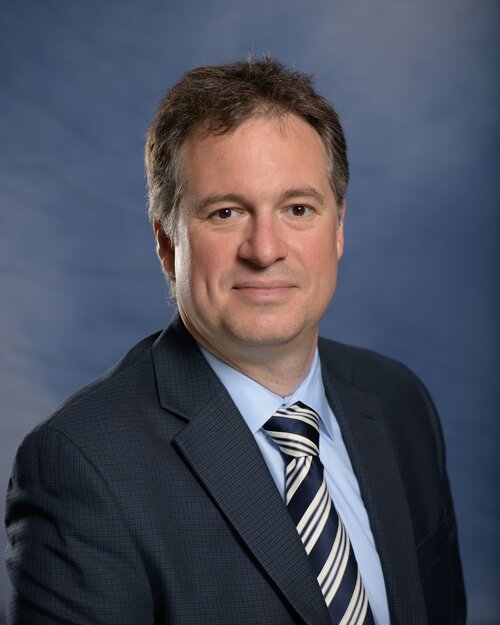
Contact Information
University of Illinois
601 S. Goodwin Avenue
A442 CLSL, MC-712, Box 49-6
Urbana, IL 61801
Biography
Professor Liviu M. Mirica received his B.S. degree in Chemistry from California Institute of Technology in 1999, and his Ph.D. in Chemistry from Stanford University in 2005. After working as an NIH postdoctoral fellow at University of California, Berkeley, in 2008 he started his independent career in the Department of Chemistry at Washington University in St. Louis. In January 2019 he joined the faculty of the Department of Chemistry at the University of Illinois.
Research Interests
synthetic inorganic and organometallic chemistry applied to renewable energy catalysis and oxidative organic transformations; development of bifunctional therapeutic and diagnostic agents for amyloid peptide disorders such as Alzheimer’s disease; study of the role of transition metal ions in neurodegenerative diseases
Research Description
Our group’s research program falls under the general areas of synthetic inorganic and organometallic chemistry and chemical biology. The pursued research projects include the synthesis and characterization of novel transition metal complexes that can mediate multi-electron redox processes relevant to energy applications and oxidative organic transformations. Targeted reactions include the aerobic oxidative C-C coupling of hydrocarbons catalyzed by high-valent late transition metal complexes, and catalytic oxidative C-H functionalization and C-C/C-heteroatom bond formation reactions using green oxidants. In addition, we are investigating the role of transition metal ions in the aggregation of amyloid β (Aβ) peptides in Alzheimer’s disease (AD), and we develop bifunctional metal-binding and metal-containing bifunctional compounds as potential therapeutic and diagnostic agents for AD.
Awards and Honors
Fellow of the Royal Society of Chemistry, 2018
BK21–KAIST Lectureship Award, Korea Advanced Institute of Science and Technology, 2017
Innovation Award, St. Louis Academy of Sciences, 2017
Saint Louis Award, ACS St. Louis Section, 2016
Organometallics Young Investigator Fellowship, ACS Division of Organic Chemistry, 2014
Saltman Lectureship, Metals in Biology Gordon Research Conference, 2014
NSF CAREER Award, 2013
Undergraduate Research Mentor of the Year Award, Washington University, 2012
Alfred P. Sloan Foundation Research Fellowship, 2012
Outstanding Faculty Member Nominee, Freshman Class Council & First Year Center, 2011
Sony Electronics Scholarship Award for Excellence in Teaching, Washington University, 2011
Ralph E. Powe Junior Faculty Award, Oak Ridge Associated Universities, 2010-2011
NIH–NRSA Postdoctoral Fellowship, 2007-2008
Young Investigator Award, Division of Inorganic Chemistry, ACS, 2006
Franklin Veatch Memorial Fellowship, Stanford University, 2004-2005
Stanford Graduate Fellowship, Stanford University, 1999-2003
Taube Prize, Stanford University, 1999
Merck Index Award for Excellence in Chemistry, California Institute of Technology, 1999
Carnation Merit Award, California Institute of Technology, 1997-1998
Silver Medal, International Chemistry Olympiad, Beijing, China, 1995
Gold Medal, International Chemistry Olympiad, Oslo, Norway, 1994
Additional Campus Affiliations
William H. and Janet G. Lycan Professor, School of Chemical Sciences
Professor, Chemistry
Professor, Biomedical and Translational Sciences
Professor, Bioengineering
Professor, Beckman Institute for Advanced Science and Technology
External Links
Highlighted Publications
Rana, M., Cho, H. J., Roy, T. K., Mirica, L. M., & Sharma, A. K. (2018). Azo-dyes based small bifunctional molecules for metal chelation and controlling amyloid formation. Inorganica Chimica Acta, 471, 419-429. https://doi.org/10.1016/j.ica.2017.11.029
Tang, F., Park, S. V., Rath, N. P., & Mirica, L. M. (2018). Electronic: Versus steric effects of pyridinophane ligands on Pd(III) complexes. Dalton Transactions, 47(4), 1151-1158. https://doi.org/10.1039/c7dt04366j
Bandara, N., Sharma, A. K., Krieger, S., Schultz, J. W., Han, B. H., Rogers, B. E., & Mirica, L. M. (2017). Evaluation of 64Cu-Based Radiopharmaceuticals that Target Aβ Peptide Aggregates as Diagnostic Tools for Alzheimer's Disease. Journal of the American Chemical Society, 139(36), 12550-12558. https://doi.org/10.1021/jacs.7b05937
Wessel, A. J., Schultz, J. W., Tang, F., Duan, H., & Mirica, L. M. (2017). Improved synthesis of symmetrically & asymmetrically: N -substituted pyridinophane derivatives. Organic and Biomolecular Chemistry, 15(46), 9923-9931. https://doi.org/10.1039/c7ob02508d
Watson, M. B., Rath, N. P., & Mirica, L. M. (2017). Oxidative C-C bond formation reactivity of organometallic Ni(II), Ni(III), and Ni(IV) complexes. Journal of the American Chemical Society, 139(1), 35-38. https://doi.org/10.1021/jacs.6b10303
Sharma, A. K., Schultz, J. W., Prior, J. T., Rath, N. P., & Mirica, L. M. (2017). Coordination Chemistry of Bifunctional Chemical Agents Designed for Applications in 64Cu PET Imaging for Alzheimer's Disease. Inorganic Chemistry, 56(22), 13801-13814. https://doi.org/10.1021/acs.inorgchem.7b01883
Cascella, B., Lee, S. G., Singh, S., Jez, J. M., & Mirica, L. M. (2017). The small molecule JIB-04 disrupts O2 binding in the Fe-dependent histone demethylase KDM4A/JMJD2A. Chemical Communications, 53(13), 2174-2177. https://doi.org/10.1039/c6cc09882g
Zhou, W., Zheng, S., Schultz, J. W., Rath, N. P., & Mirica, L. M. (2016). Aromatic cyanoalkylation through double c-h activation mediated by Ni(III). Journal of the American Chemical Society, 138(18), 5777-5780. https://doi.org/10.1021/jacs.6b02405
Schultz, J. W., Fuchigami, K., Zheng, B., Rath, N. P., & Mirica, L. M. (2016). Isolated Organometallic Nickel(III) and Nickel(IV) Complexes Relevant to Carbon-Carbon Bond Formation Reactions. Journal of the American Chemical Society, 138(39), 12928-12934. https://doi.org/10.1021/jacs.6b06862
Zhou, W., Schultz, J. W., Rath, N. P., & Mirica, L. M. (2015). Aromatic Methoxylation and Hydroxylation by Organometallic High-Valent Nickel Complexes. Journal of the American Chemical Society, 137(24), 7604-7607. https://doi.org/10.1021/jacs.5b04082
Recent Publications
Banerjee, S., Chakrabarti, S., Bouley, B. S., Wahlmeier, A. J., & Mirica, L. M. (2025). Mononuclear palladium(I) and palladium(III) coordination compounds. Coordination Chemistry Reviews, 535, Article 216605. https://doi.org/10.1016/j.ccr.2025.216605
Bouley, B. S., Bae, D. Y., Chakrabarti, S., Rosen, M., Kennedy, R. D., & Mirica, L. M. (2025). Insights into the mechanism of active catalyst generation for the PdII(acac)2/PPh3 system in the context of telomerization of 1,3-butadiene. Chemical Science, 16(34), 15486-15498. https://doi.org/10.1039/d5sc02171e
Bouley, B. S., Bae, D. Y., Zhou, W., Griego, L., & Mirica, L. M. (2025). Oxidative Addition of Aryl Bromides at Palladium(I) to form Palladium(III) Complexes. Angewandte Chemie - International Edition, 64(43), Article e202514101. https://doi.org/10.1002/anie.202514101
Chakrabarti, S., Banerjee, S., & Mirica, L. M. (2025). Capturing the Hybrid Palladium(I)-Radical Pair Relevant to Photoexcited Palladium Catalysis. Journal of the American Chemical Society, 147(45), 41882-41896. https://doi.org/10.1021/jacs.5c14709
Gutiérrez, C., Sun, L., Huang, Y., Gui, K., Terpstra, K., & Mirica, L. M. (2025). N-Alkylamino Stilbene Compounds as Amyloid β Inhibitors for Alzheimer’s Disease Research. Molecules, 30(11), Article 2471. https://doi.org/10.3390/molecules30112471